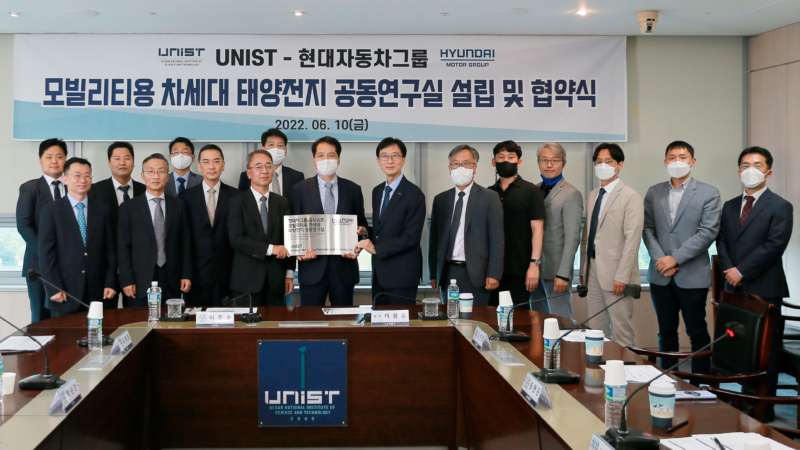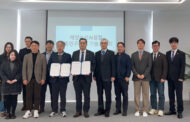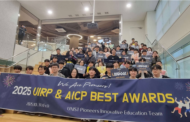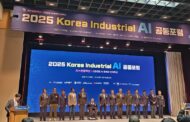UNIST has embarked on a challenging journey towards the development of ‘solar-powered vehicles‘ to reduce carbon emissions with its perovskite solar cell technology.
On June 10, UNIST and Hyundai Motor Group held a ceremony to mark the signing of a Memorandum of Understanding (MoU) between the two organizations. This was followed by the signboard-delivering ceremony for the HMG-UNIST Collaborative Research Laboratory for Automotive Next-Gen Solar Cell. Both events took place in the 6F Main Conference Room of the Main Administration Building at UNIST. The joint laboratory will in operation for three years from June 2022 to May 2025.
The Hyundai-Kia automotive group has recently released the ‘Solar Loop: Car Roofs that Generate Energy,‘ an innovative technology that charges a car battery, using solar panels installed on the car. This special loop is composed of the solar panel, controller, and battery. When sunlight enters the cell surface of a solar panel, it is separated electrons and electron holes, creating energy. This has attracted considerable attention as sustainable automotive technology, as it can charge the battery while driving, while no greenhouse gas emissions directly come from it.
In order for the Solar Loop to be more commonly used, improvements in weight and efficiency are needed. Although silicon is the most common material used in solar cells, silicon-based solar cells are heavy and about to reach their technological efficiency limit of 26%. Accordingly, the joint laboratory challenges core technologies to make ‘high-efficiency, large-area perovskite–silicon (PVK–Si) tandem solar cells for future vehicles.
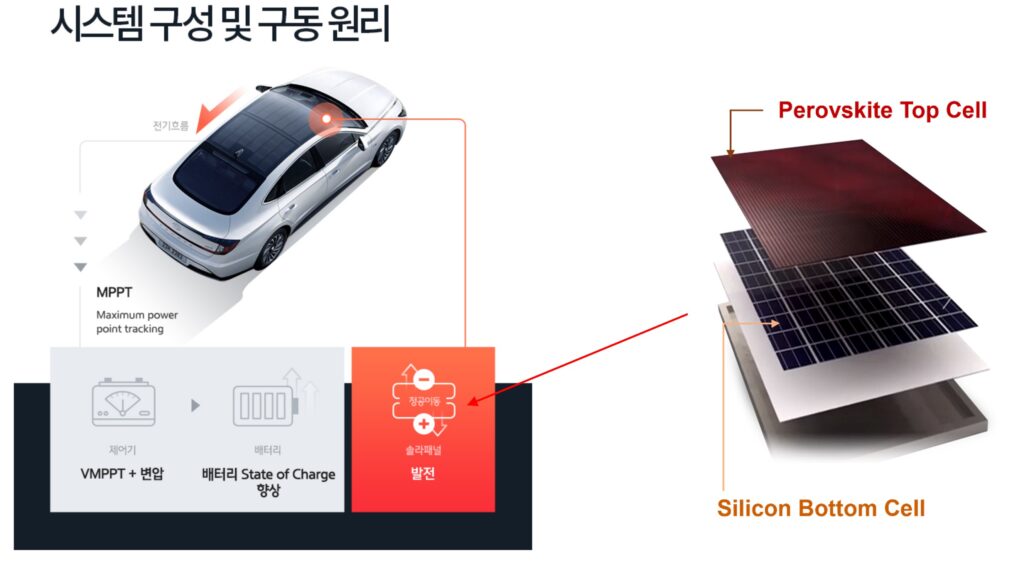
The goal is to apply high-efficiency, large-area PVK-Si tandem solar cells (right) to their newly-developed solar loop systems (left) on the top of car roof. | Image Credit: Hyundai Motor Company, Frontier Energy Solutions LLC.
“Mobile solar cells should be lightweight and highly-efficient per unit area,” said Distinguished Professor Sang Il Seok (School of Energy and Chemical Engineering). “We aim to achieve a world-record efficiency level through the development of ‘perovskite-silicon tandem devices‘ by stacking multiple layers of perovskite and silicon having different bandgaps with specific maximum absorption and width.”
In doing so, the joint laboratory plans to maximize and optimize each element technology, such as Perovskite Bandgap Control by Professor Sang Il Seok, Large-area Coating by Professor Kyoung Jin Choi, Development of Charge-Transfer Materials by Professor Changduk Yang, and Development of Manufacturing Technology for Silicon Bottom Cell Technology. Each task will be carried out effectively by UNIST researchers who are experts in the field of solar cells.
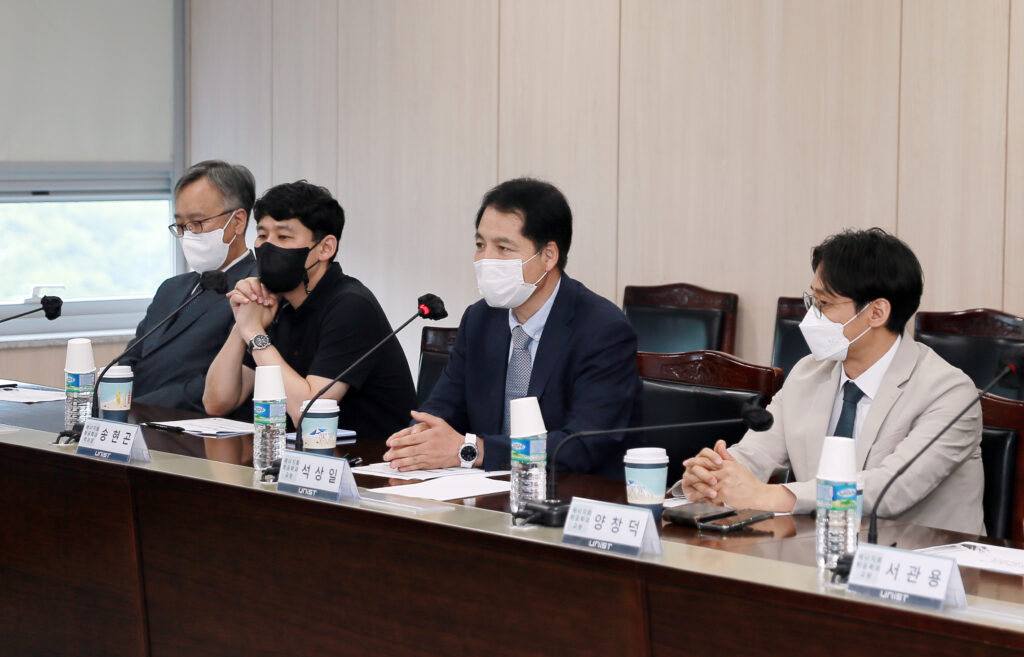
Professor Seok expressed appreciation for the launch of the joint research laboratory.
Hyundai Motor has set its new goal to achieve a photovoltaic conversion efficiency (PCE) of 30% in order to secure better performance than the recently-released solar loops. It has been analyzed that such efficiency is necessary to secure 12 additional miles (20km) via solar energy generation. “This is a difficult enough task to call it ‘very challenging’ in Germany,” said Managing Director Soon-chan Park (Hyundai Motor Company). “However, we will overcome the difficulties with UNIST and check the feasibility of technology for the next three years.”
“In order to achieve net-zero carbon emissions by 2050, global carbon dioxide emissions need to be reduced by 24% by 2030,” said Director Jong-Soo Lee (Hyundai Motor’s Institute of Advanced Technology Development, IATD). “With UNIST’s advanced technology, we will do our utmost to implement carbon neutrality in the automobile sector.”
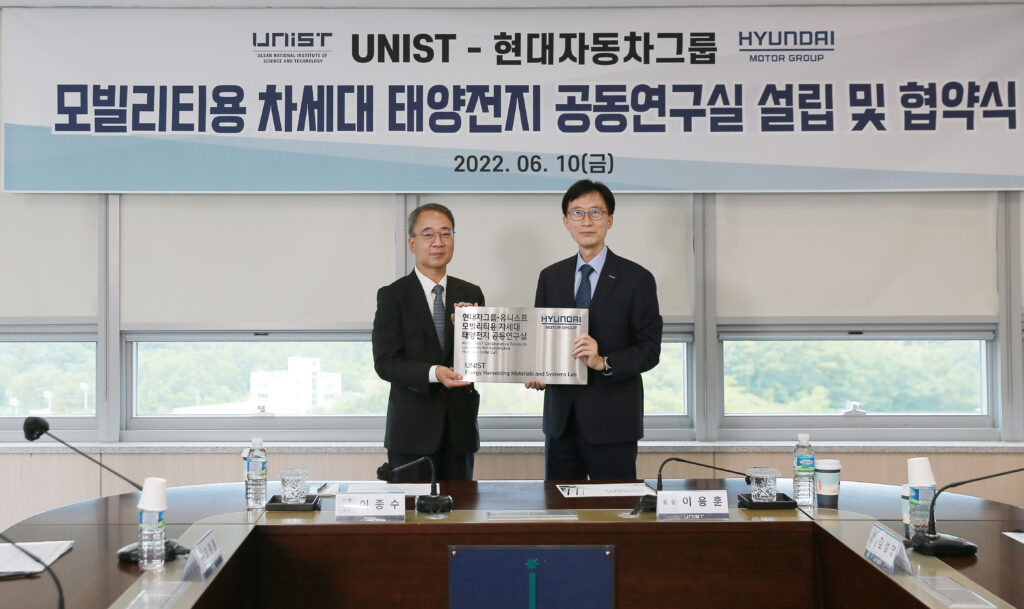
From left are Director Jong-Soo Lee of Hyundai Motor’s Institute of Advanced Technology Development and President Yong Hoon Lee of UNIST.
“UNIST has the world’s highest efficiency (25.7%) of Perovskite single-device solar cells, and is currently working on an Alkimist project (research manager: Choi Kyung-jin) led by Seok Sang-il, Choi Kyung-jin, and Yang Chang-deok,” said President Yong Hoon Lee of UNIST. “Since I was appointed to UNIST, I have been thinking about whether there is anything to collaborate with Hyundai Motor in Ulsan, and I have a good opportunity in the solar cell field,” and added, “I hope the relationship between UNIST and Hyundai Motor Group will develop further.”
The ceremonies have been attended by UNIST President Yong Hoon Lee, Dean Sung Youb Kim (College of Engineering), Professor Hyun-Kon Song (School of Energy and Chemical Engineering), Professor Kyoung Jin Choi (Department of Materials Science and Engineering), Professor Changduk Yang (School of Energy and Chemical Engineering), Professor Kwanyong Seo (School of Energy and Chemical Engineering), and Research Professor Yonghui Lee (School of Energy and Chemical Engineering). From Hyundai Motor Group, Director Jong-Soo Lee (Hyundai Motor’s IATD), CEO Junghoon Oh (Hyundai & Kia Next Generation Vehicle Building, NGV), Managing Director Soon-chan Park (Hyundai Motor Company), and other key officials from related organizations.


